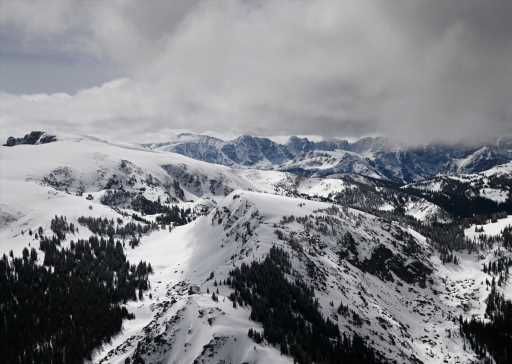Colorado River is in crisis despite strong rain and snow, experts say
Water is rushing from Colorado’s Western Slope and into the tributaries of the Colorado River, restoring reservoirs across the American West to perhaps a semblance of their former glory.
Cities, farmers, ranchers and water managers are breathing a sigh of relief at the crisis avoided this summer thanks to the robust snowfall this winter.
A major crisis appears to have been avoided, for now anyway, water experts say. But the winter snow and spring rains aren’t enough to wash away the bigger picture that the Colorado River is still drying year after year.
One good water year can be followed by several dry ones, Jennifer Gimbel, a senior water policy scholar at Colorado State University, said. The drying trend has been so strong over the last two decades that scientists no longer call it a drought. Instead they say this is the drier future to which the West must become accustomed. And state, federal and tribal officials must continue seeking new ways to use less water from the Colorado River.
“It’s a whole new world out there,” Gimbel said. “This is a great year but it’s not enough to get us out of this situation.”
With above-average snowpack across Colorado’s Western Slope, which holds the Colorado River’s headwaters, reservoirs across the West are filling higher than they have in recent years. The country’s two largest reservoirs, lakes Mead and Powell, should see enough water to avoid the worst-case scenarios, including losing the ability to generate electricity at their dams or even suffering infrastructure damage, Gimbel said.
Paired with that water comes a tentative deal that would cut water use in Arizona and California – the river’s two biggest users – and Nevada over the next three years, Gimbel said. Upstream states of Colorado, New Mexico, Utah and Wyoming are currently studying that proposal, which could be enacted by the end of the year.
To consider the Colorado River Basin’s current conditions, imagine a person who just lost their job and their health insurance, Rhett Larson, a water law professor at Arizona State University, said. They’ve had a heart attack and the bank is foreclosing on their home too. But then they go to a casino and win $5,000 at the slots.
That extra money is a nice boost, much like the abundant snowfall this winter, Larson said.
“But it means nothing for your long-term future and it has taught you nothing about a management strategy,” Larson said.
While the extra water and tentative plan could last the basin a couple of years, Gimbel said the states, cities, tribal officials and other water managers must use that time to cut a long-term deal. They must cut water use in perpetuity and better adapt to a dwindling river.
Many water-saving strategies will focus on the agricultural industry, which uses the vast majority of river water. They include more-efficient irrigation techniques, allowing fields to lay fallow or switching to crops that consume less water. Many of those ideas could raise costs at the grocery store for everything from leafy greens to beef and dairy products. And they could mean that some produce might even become less widely available.
Cities and states can also enact water recycling or sustainability programs. Those include reusing certain water sources or even replacing grass lawns across the West with native plants that use less water.
Water managers in the basin must also reconsider how best to divide the river moving forward, especially since states like Arizona and California consistently use more than their legal share.
Already those conversations are underway, Larson said. But they’re far more complicated than the current, tentative deal.
Rather than negotiating water cuts from the three downstream states of Arizona, California and Nevada, a long-term plan must include all seven states within the Colorado River Basin, Larson said. It must also include federal officials alongside representatives from Mexico and the dozens of Native American tribes in the basin, all of which depend on the river.
All those parties must reach a deal by the start of 2026 because that’s when existing cuts they’ve made since 2007 will expire, Larson said. Without a new deal in place by then, the states, tribes and countries must go back to the drawing board.
Related Articles
- June 9, 2023
Environment |
Recent rains, snowmelt raises reservoirs, swells rivers, thickens grass and trees around Colorado - June 5, 2023
Environment |
Search for missing Colorado River kayaker Ari Harms suspended - June 2, 2023
Environment |
Ari Harms, missing Colorado River kayaker, passionate about helping others, friends say - May 31, 2023
Environment |
Denver records one of its wettest Mays in decades. What does that mean for wildfires? - May 30, 2023
Environment |
Man last seen entering Colorado River in kayak is missing
This winter’s extra water eased tensions throughout the basin but water managers can’t be lulled into a false sense of security, Larson said. They have lots of work to do over the next two and a half years.
“We’re already behind,” Larson said. “We’ve got a lot of ground to make up.”
Get more Colorado news by signing up for our Mile High Roundup email newsletter.
Source: Read Full Article




